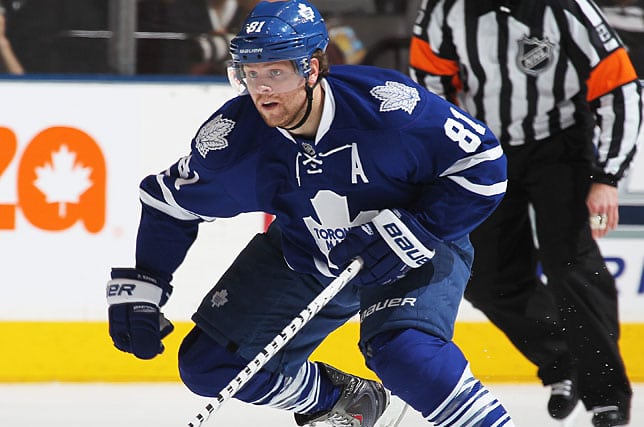
Who won the Phil Kessel to Toronto trade…five years later?
As part of our cold case file series, we review the Phil Kessel to Toronto trade five years later. While the gut reaction may be to award Boston a landslide win based on their Stanley Cup triumph and acquisition of Tyler Seguin, the deal merits deeper exploration.
 Who won the Phil Kessel to Toronto trade…five years later?
Who won the Phil Kessel to Toronto trade…five years later?For a guy who doesn’t say much, Phil Kessel is the source of significant noise.
Ever since he begged out of Boston and was dealt to Toronto for a trio of high draft picks, fans and media on both sides of the equation have been debating the merits of the blockbuster.
The derisive “Thank you, Kessel” chants in Beantown remain alive and boisterous, while the Maple Leafs showed faith in their sniper by rewarding him with an eight-year, $64-million contract extension that kicks in this season.
The trade officially turns five on Sept. 18 and the question is: who has had the happier returns? As part of a recurring feature in which we re-open a cold file (ok, this one still has some burning embers) from a deal that transpired five or more years ago, we re-assess the swap.
The Deal
Sept. 18, 2009: Boston trades Phil Kessel to Toronto for a first and second round pick in 2010 and a first round pick in 2011.
The Results
Kessel: Depending on your expectations of him, Kessel has either been very good or disappointing as a Maple Leaf. If you believed he’d blossom into an elite NHL goal-scorer, you’d be content. Kessel, still just 26, has found the back of the net 156 times in 364 games with Toronto. Only four other players have more tallies in that time frame: Steven Stamkos (210), Alex Ovechkin (203), Corey Perry (172) and Patrick Marleau (161). In addition, he has been highly durable, participating in 97 percent of Toronto’s games during his tenure. If, however, you were counting on him to be the centerpiece of a Maple Leafs revival, you’re smarting. Kessel’s goals, which sometimes come in big bunches, haven’t been enough to lift Toronto to new heights. They’ve missed the playoffs four of his five seasons in blue and white and haven’t won a round.
2010 first round pick: Toronto’s poor performance in 2009-10 was Boston’s gain as they secured the second overall pick and spent it on Tyler Seguin. Seguin showed flashes of brilliance in black and gold, and earned a Stanley Cup ring as a rookie, but the club decided to part ways with him in 2013, in part due to what was deemed “maturity” issues. The booty he helped fetch from Dallas includes Loui Eriksson, Reilly Smith, Joe Morrow and Matt Fraser.
2010 second round pick: With the 32nd overall pick, the Bruins took Jared Knight, a skilled center who, partly due to injury, hasn’t cracked the NHL as a regular yet. He’ll get another look in B’s camp this fall.
2011 first round pick: Dougie Hamilton was scooped up seventh overall by the Bruins and is on track to be a high impact defenseman in the NHL. Last season, he was fifth among B’s defenseman at 19:06 of time on ice per game.
The Winner
Boston, but not by as wide a margin as some believe.
While the Bruins captured a Stanley Cup the season after they moved Kessel, it’s tough to argue they wouldn’t have had a similar result had they retained his services. He did, after all, lead the team the previous season with six playoff tallies. Seguin provided some wonderful moments that post-season, particularly in the third round, but he was also a healthy scratch for the first two rounds. The other components of the trade weren’t relevant in 2011 as far as Boston’s triumph is concerned.
Kessel, meantime, remains the best player from the trade still with the clubs in question. He finished sixth in the scoring race last season, just seven points back of second-placed Ryan Getzlaf. Of course, Seguin was fourth in the scoring derby, but he collected his points in Dallas.
All that said, Kessel has not yet been able to carry Toronto to a new level of success. The franchise has ostensibly spun its wheels during his era.
If you asked fans in both cities if they’d support the same deal now, with the benefit of hindsight, the answer from Boston would be virtually unanimous. You couldn’t say the same for Toronto.
Now if we re-opened this case in five more years, the conclusion might be different. Or it might be more lopsided.

